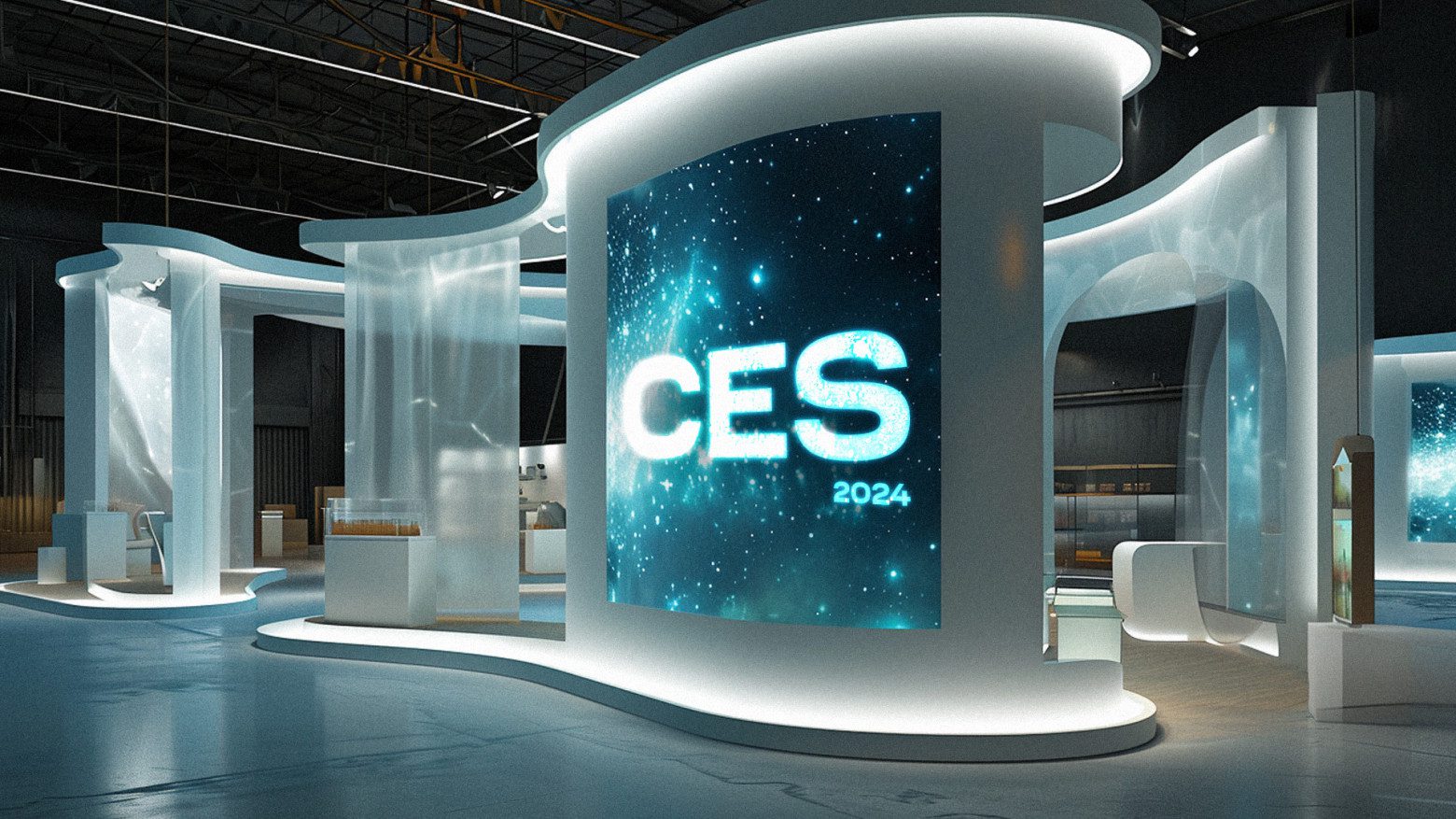From earbuds with real-time language translation to a flying car, there was no shortage of cutting-edge tech on display at CES 2024. When zeroing in on immersive technology, the story was no different. CES 2024 painted a breathtaking picture of a future where XR (Extended Reality), infused with the intelligence of AI, will blur the lines between physical and digital to form the foundations of spatial computing.
While headset announcements were plenty (and we’ll cover that below), this wasn’t just about the latest gadgets; it was a glimpse into a world where our surroundings morph and adapt to our needs, by seamlessly blending a 3D visual interface with the real world, all guided by the invisible hand of artificial intelligence.
AI Powers Personalized Virtual Shopping Experiences
Gone are the days of static menus and clunky interfaces. Thanks to real-time virtual try-on solutions like Geenee, shoppers can try out garments and accessories in AR before hitting purchase. This has many benefits, including taking the guesswork out of online shopping, and reducing returns by as much as 60%. With the added power of AI, shoppers can try on outfits and then receive real-time styling recommendations for other products. AI stylists are beneficial both from a revenue and a customer experience perspective, helping shoppers identify more outfits and products that are suitable for them.
At CES, companies like Stylebot showed off an app that lets users catalog their closet and receive AI styling recommendations for which pieces go best when worn together. A feature like this, combining AI with the power of Geenee AR virtual try-on would create a shopping experience fit for a spatial future.
This level of personalization would not be possible without AI, and the real-time visualization would not be possible without AR. Paired together, shoppers are able to make more informed decisions and the discovery process is completely personalized to them.
Virtual Try-on Powers Social Shopping
Remember the joy of shopping in-person with a friend, sharing opinions and laughs? One drawback of online shopping is that although more convenient, it is no longer much of a social activity. And it’s easier to make wasteful impulse purchases if you don’t have a friend’s feedback to help guide you. At CES 2024, Walmart announced the upcoming “Shop with Friends” platform, which aims to bring social shopping to the virtual world.

Image Credit: Walmart
While Walmart’s new platform is still in beta, Geenee AR has out-of-the-box shopping features that can deliver on social shopping today. Shoppers can try on a variety of garments and styles from an easy to access WebAR environment, capture image and video, and share it either directly with friends, or on their social profiles to gather collective feedback.
Social shopping in XR will revolutionize online retail, making it more interactive, engaging, and perhaps even a little more fun.
Design with AI, Try-On in AR
Thanks to AI, it’s now possible to scan the internet for the latest design trends, account for the flavor of the brand, and receive output for new designs bases on this data. At CES, fashion brand The Kooples teamed up with IMKI to debut a capsule collection fit for the iconic brand, but designed by AI.
The next logical step of course, is to visualize these designs in AR for virtual try-on. Then it’s possible to really get a sense for how the designs will fit before moving into production. Brands can also offer previews to consumers before putting garments into production to gauge preliminary interest.
While AI is the brains here, XR still plays a pivotal role as the visual interface.
XR Headsets Fit for an AI Future
Although the headset making headline news, the Apple Vision Pro, did not have a presence at CES, there was no shortage of XR hardware announcements in Vegas. “Spatial Computing” is the phrase on everyone’s lips, and Apple’s forthcoming device isn’t the only option.
Sony was showing off an AR headset of their own, with a flip up display that’s set to launch in 2024. Crowd favorite Xreal Air 2 Ultra was also available for demo. It tracks the users’ hands and can identify real-world objects that virtual elements can interact with. The Xreal glasses were also part of an AR in the car experience from BMW.

Image Credit: Siemens
Qualcomm’s next-generation XR chip promises even faster processing and stunning visuals for both VR and AR headsets. Asus unveiled the “Strip,” a pair of sleek AR glasses that disappears into your hairline when not in use. These advancements pave the way for a future where XR blends seamlessly into our lives. Where it becomes less of an accessory and more of a natural extension of ourselves. No doubt AI will be a big part of that.
CES 2024 wasn’t just about the latest gadgets. It was a portal to a future where AI superpowers XR, transforming how we interact with the world around us. From virtual shopping sprees with friends to AI-powered fashion assistants to the next generation of headsets, the future is not confined to screens. It’s poised to spill out into our physical spaces, becoming more fluid, dynamic, and perhaps it will even be indistinguishable from magic ;). Buckle up, because the future of spatial computing is here, and it’s powered by AI.
Interested in creating cutting-edge AI-powered immersive experiences to engage your audience? Get in touch today!
